



History of Colour Light therapy
Therapy with colours and coloured light is very old; it has been applied in all corners
of the world and in all cultures. References to light therapy go back in time as
far as ancient Egypt. There light therapy was used to support other therapy forms.
of course in those days there was no artificial light: the old Egyptians used the
light of the sun.
Sunlight shone in from above in chambers especially built for that purpose only.
These chambers had no ceiling or roof, but were open. By means of coloured sheets
which acted as ceiling the sunlight shining through was coloured in the same colour
as the walls and the floor of the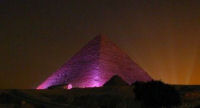 chamber. In this way a treatment chamber was totally
filled with one colour. The person receiving light treatment lay down in such a chamber
for a session for fifteen minutes up to an hour. Generally one up to four of such
sessions were prescribed.
chamber. In this way a treatment chamber was totally
filled with one colour. The person receiving light treatment lay down in such a chamber
for a session for fifteen minutes up to an hour. Generally one up to four of such
sessions were prescribed.
In these days doctors worked with 8 different colours: dark blue, light blue, green,
yellow, orange, bright red, dark red and gold. Great attention was given to the purity
of the colour in the treatment chambers.
The blue colours were used by the Egyptian
doctors for treatment of water related deficiencies (kidney and bladder). They applied
green for relaxation and balance (physical, mental and emotional!) and yellow for
the treatment of glands. Orange was applied in case of digestion problems (flatulence
and bowels); the red colours for disorders of muscles, veins, heart and blood. Gold
was applied for support of the nerves and for spirit and soul.
In ancient Greece there was a dedicated centre for light therapy, called Heliopolis
(City of Light). In this centre people were exposed to  filtered sunlight. The Greeks
had already studied the use of Colour Light for the treatment of tuberculosis.
filtered sunlight. The Greeks
had already studied the use of Colour Light for the treatment of tuberculosis.
At the end of the 17th century it was the English philosopher and mathematician Sir
Isaac Newton, proposed modern concepts concerning colour. He experimented with prisms
and proved that day light is a mix of the colours of the visible spectrum. 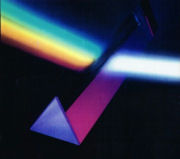
One hundred and fifty years after Newton, Johann Wolfgang Goethe defined the three
primary colours (red, blue and yellow) and how the other colours of the rainbow could
be composed of these three. He also recognized, that some colours are active and
warm (red, orange, yellow) whereas others are passive and cold (green, blue, violet).
Nowadays these principles are still taught and used in education, art and psychology.
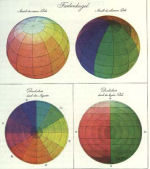 In the century following, doctors used colours to treat all kinds of disorders, from
psychological ailments to smallpox. In 1878 Dr. Edwin D. Babbitt published his book
"Principles of Light and colour". In this book he described what he called Chromatotherapy
(healing with coloured lights) as well as treatments for several disorders, among
which were burns and nervousness.
In the century following, doctors used colours to treat all kinds of disorders, from
psychological ailments to smallpox. In 1878 Dr. Edwin D. Babbitt published his book
"Principles of Light and colour". In this book he described what he called Chromatotherapy
(healing with coloured lights) as well as treatments for several disorders, among
which were burns and nervousness.
At the beginning of the 20th century Dinshah Ghadiali,
a naturalised American citizen of Indian birth, developed chromo therapy, building
on the work of Babbitt. He applied light on the body using coloured filters. Ghadiali's
system is based on matching the frequency of colours to the frequency of a disease
pattern.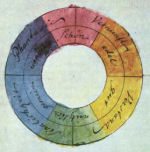
Dinshah made the radical step of considering disease according to its vibrational
nature. He reasoned that all living things are imbued with specific energy patterns.
Pathogenic organisms each have an original vibratory signature, some vibrating slowly
(fungi), others rapidly (viruses). The lower frequency diseases resonate to the lower
frequency colours -- the reds and oranges. The higher frequency diseases need higher
frequency colours, such as violet and blue, to disperse them. He achieved spectacular
results on diseases considered to be incurable (among which diabetes and tuberculosis).
Applying innovative but controversial light treatments, Ghadiali spent much time
in court rooms to defend his work.
In the 1950s and 60s John Nash Ott experimented
with photography, working for Walt Disney Studios. He produced new artificial sources
of light, which were almost identical to regular spectrum sunlight. Using his new
light sources, Ott grew plants in his basement and realised that accentuating different
parts of the light spectrum caused dramatic changes in growth patterns. From plants
Ott moved on to experiments to discover how artificial light impacts on animals and
humans, discovering the effect to be deleterious. With the twenty-first century
prevalence of the “three screen syndrome” (cinema, television and computer) and the
phasing out of incandescent light bulbs, the damage to human health and well-being
that Ott documented through his research, is on the increase, and the need for the
full spectrum lighting he developed greater than ever.
Russian biologists showed that
cells of plants communicated mutually, even separated by a quartz glass wall and
that light is the carrier of biological information.
In 1947, the Swiss psychologist Dr. Maxim Luscher introduced the Luscher colour test,
a form of colour therapy named after him, which is still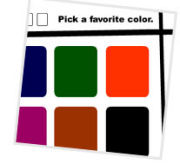 used by many psychologists.
The test consists of narrowing down forty-three colours from a pallette of seventy-three.
By analyzing which colours a person chooses or rejects the therapist gains insight
in the psychological status of that person. If for example someone chooses especially
dark colours it indicates that that person is in need of rest and relief of tension.
used by many psychologists.
The test consists of narrowing down forty-three colours from a pallette of seventy-three.
By analyzing which colours a person chooses or rejects the therapist gains insight
in the psychological status of that person. If for example someone chooses especially
dark colours it indicates that that person is in need of rest and relief of tension.
Concurrent with Luscher, the Russian scientist S.V. Krakov investigated the impact
of colours on the nervous system. He observed that red stimulates the adrenal glands,
raises the blood pressure and accelerates the heart beat, whereas blue light had
a calming effect.
At the end of the 70’s Peter Mandel, colour visionary from Germany,
started using Kirlian photography to make pictures of the toes and fingertips for
diagnostic purposes. The pictures show subtle differences in electric charges as
a result of pathological processes (diseases and disorders). Advanced versions of
this technique are in use today by many therapists.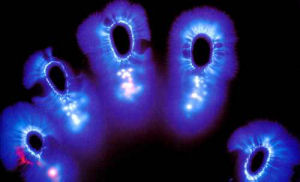
It was, however, another discovery of Mandel which laid the foundation of modern
light therapy. He discovered that pain can be diminished in a couple of minutes by
shining Colour Light on specific acupuncture points, irrespective of the condition
that caused the pain. His further investigations have led to the discovery of manners
to interpret and influence the emissions of light coming from the energy fields of
the human body. Through the years Peter Mandel has developed a lot of treatments,
consisting of the use of coloured lights on energy points on the human body.
The
last decade light therapy has gained interest enormously: successful treatments have
been developed for disorders related to depressions, sleep problems and hormonal
imbalances. The remarkable results have also awoken the curiosity of modern science.
There more and more proof is found for the fundamental law, which applies to all
organisms in the universe (including to us, humans): all communication and all interaction
between organisms is related to or is brought about by the energy of light!







